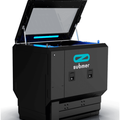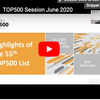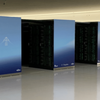FRANKFURT, Germany; BERKELEY, Calif.; and KNOXVILLE, Tenn.— The 57 th edition of the TOP500 saw little change in the Top10. The only new entry in the Top10 is the Perlmutter system at NERSC at the DOE Lawrence Berkeley National Laboratory. The machine is based on the HPE Cray "Shasta" platform and a heterogeneous system with both GPU-accelerated and CPU-only nodes. Perlmutter achieved 64.6 Pflop/s, putting the supercomputer at No. 5 in the new list.
Although there was a trend of steady progress in the Green500, nothing has indicated a big step toward newer technologies.
The system to snag the No. 1 spot for the Green500 was MN-3 from Preferred Networks in Japan. Knocked from the top of the last list by NVIDIA DGX SuperPOD in the US, MN-3 is back to reclaim its crown. This system relies on the MN-Core chip, an accelerator optimized for matrix arithmetic, as well as a Xeon Platinum 8260M processor. MN-3 achieved a 29.70 gigaflops/watt power-efficiency and has a TOP500 ranking of 337.
Today's data centers consume between 1% and 3% of all electricity worldwide. Over 80% (Reference 1) of this electricity is currently generated by burning fossil fuels, and electricity generation is the largest source of greenhouse gas emissions worldwide. However, data centers continue to expand as new services are constantly being offered to consumers and organizations. Advanced computing technologies that include CPU level generational enhancements, heterogeneous computing, and faster storage and networking enable more complex analytics and simulations to be brought into mainstream workloads.
FRANKFURT, Germany; BERKELEY, Calif.; and KNOXVILLE, Tenn.—The 56th edition of the TOP500 saw the Japanese Fugaku supercomputer solidify its number one status in a list that reflects a flattening performance growth curve. Although two new systems managed to make it into the top 10, the full list recorded the smallest number of new entries since the project began in 1993.
The entry level to the list moved up to 1.32 petaflops on the High Performance Linpack (HPL) benchmark, a small increase from 1.23 petaflops recorded in the June 2020 rankings. In a similar vein, the aggregate performance of all …
Modern HPC systems include extreme numbers of compute elements and extremely low-latency interconnection networks. In order to exploit the capabilities of these architectures and to meet their demands in scalability, communication software needs to scale and support applications with adequate functionality to express their parallelism. Moreover, communication software should add as little overhead as possible in order to avoid compromising the native performance of the interconnection network. These requirements make the design of high-performance communication software extremely intricate, since they demand minimal memory requirements and low instruction counts and cache activity while meeting stringent performance targets.
The TOP500 authors encourage the HPC community to submit entries for the 56th TOP500 and Green500 lists.
The November 2020 TOP500 list is released during the SC20 Supercomputing Conference.
We are interested in new entries as well as entries that are no longer valid. Please feel free to contact the authors here if you have questions. The guidelines for submission of entries can be found here.
DATA AT THE CENTER OF THE SOCIETY
Datacenters can be considered as a sort of nervous system of the contemporary society. Just like the human nervous system, datacenters are not single structures, working on their own. Quite the contrary, “datacenters” are heterogeneous systems with multiple layers of complexity and integration and interaction, internally and externally. This apparently obvious statement should nevertheless be never forgotten because we are entering an era in which datacenters will play a fundamental role in our daily lives. And to make the next digital revolution (in fact, already undergoing), sustainable, we as an industry must find …
Find the highlights of the 55th TOP500 list below, presented by Erich Strohmaier. Slides from the session are also available now.
Detailed report on the Fujitsu Fugaku system.
FRANKFURT, Germany; BERKELEY, Calif.; and KNOXVILLE, Tenn.—The 55th edition of the TOP500 saw some significant additions to the list, spearheaded by a new number one system from Japan. The latest rankings also reflect a steady growth in aggregate performance and power efficiency.





